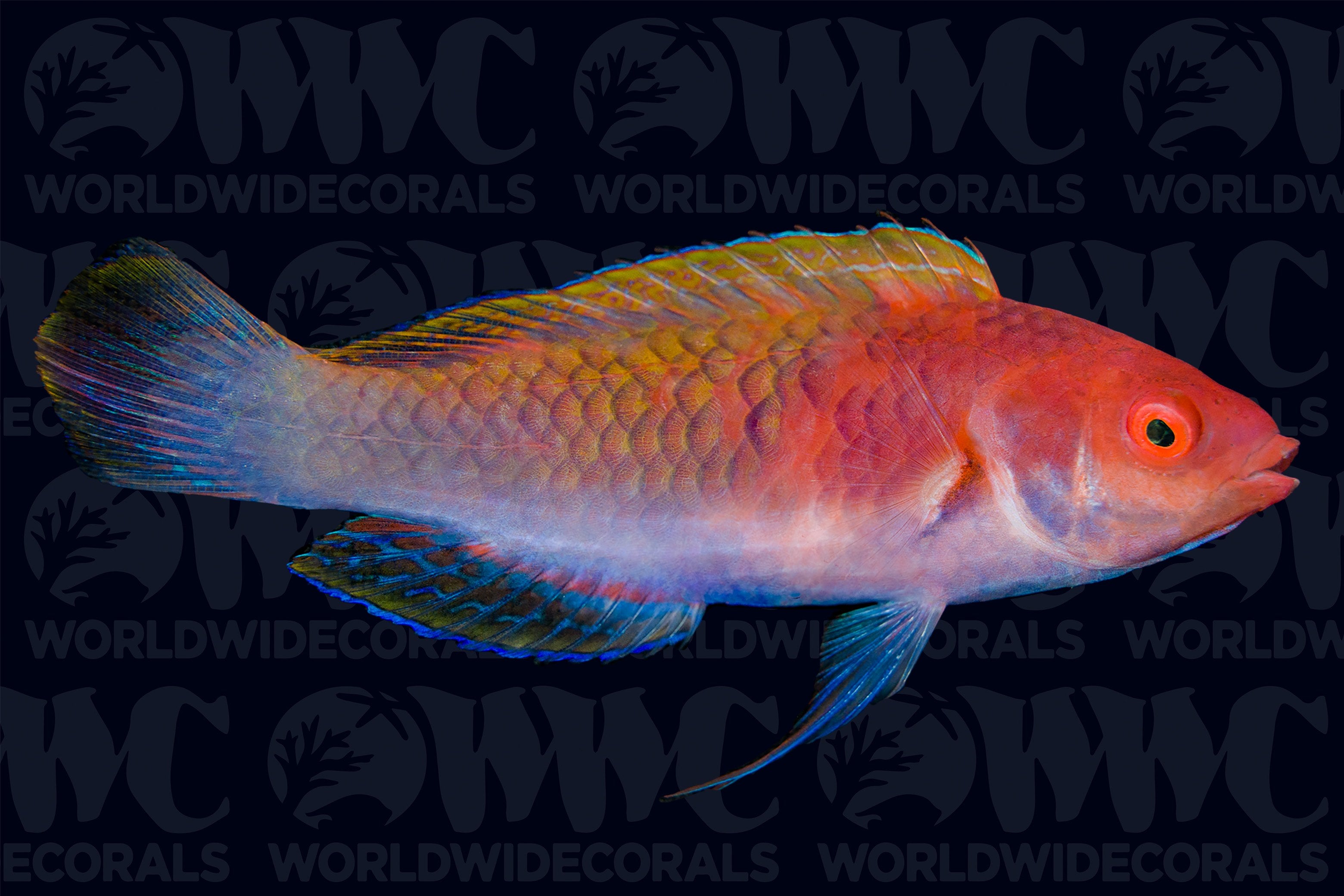Description
Cirrhilabrus chailiasi
The Ruby Head Fairy Wrasse is a stunning addition to the reef aquairum, being a colorful and active fish. Males are typically larger and more colorful than females. Females are mostly red with a white belly, while males display a dark red head, vibrant green to blue body and black-edged scales. These wrasses thrive in aquariums with ample rockwork that offers hiding spots such as caves and crevices. Unlike many wrasses, they do not bury themselves in the sand at night. Instead, they either wedge into rock crevices or form a mucus cocoon—similar to parrotfish—for protection while sleeping. The cocoon remnants do not affect water quality or aquarium inhabitants. A tight-fitting lid is recommended, as they may jump. Peaceful and reef-safe, Ruby Head Fairy Wrasses are excellent additions to community aquariums. As carnivores, they require a varied diet of enriched meaty foods—like mysis shrimp, squid, clams, fish, or specialized carnivore preparations—fed at least twice daily. They can grow up to 5 inches and need a minimum aquarium size of 70 gallons. Native to the Western Pacific, they are found from Bali to Flores and occasionally north to Wakatobi, typically near coral slopes at depths of up to 130 feet.
The Ruby Head Fairy Wrasse is a stunning addition to the reef aquairum, being a colorful and active fish. Males are typically larger and more colorful than females. Females are mostly red with a white belly, while males display a dark red head, vibrant green to blue body and black-edged scales. These wrasses thrive in aquariums with ample rockwork that offers hiding spots such as caves and crevices. Unlike many wrasses, they do not bury themselves in the sand at night. Instead, they either wedge into rock crevices or form a mucus cocoon—similar to parrotfish—for protection while sleeping. The cocoon remnants do not affect water quality or aquarium inhabitants. A tight-fitting lid is recommended, as they may jump. Peaceful and reef-safe, Ruby Head Fairy Wrasses are excellent additions to community aquariums. As carnivores, they require a varied diet of enriched meaty foods—like mysis shrimp, squid, clams, fish, or specialized carnivore preparations—fed at least twice daily. They can grow up to 5 inches and need a minimum aquarium size of 70 gallons. Native to the Western Pacific, they are found from Bali to Flores and occasionally north to Wakatobi, typically near coral slopes at depths of up to 130 feet.
3 DAY GUARANTEE | Hassle Free | 100% Satisfaction | Online Orders Only


